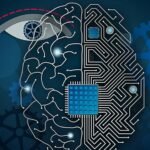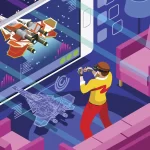AI for Accessibility: How AI is making technology more accessible for individuals with disabilities.
Artificial intelligence (AI) has transcended its role as a technological marvel to become a powerful force for social good. One of its most remarkable applications is in the realm of accessibility, where AI is breaking down barriers and making technology more inclusive for individuals with disabilities. In this article, we delve into the profound impact of AI in promoting accessibility, enabling a more equitable and empowering digital landscape for people of all abilities.
I. The Challenge of Accessibility
In an increasingly digital world, access to technology is a fundamental right. However, individuals with disabilities often encounter barriers that hinder their ability to fully participate in the digital realm. This can range from visual impairments that affect screen readability to motor limitations that make traditional interfaces challenging to navigate.
II. AI-Powered Solutions for Accessibility
- Speech Recognition and Voice Commands AI-driven speech recognition technology enables individuals with motor disabilities to interact with devices through voice commands. This technology is not only used for communication but also for controlling smart homes, browsing the web, and using applications.
- Screen Readers and Text-to-Speech AI-driven screen readers convert on-screen text into synthesized speech, enabling visually impaired individuals to access digital content. These tools provide auditory feedback and make documents, websites, and applications accessible.
- Gesture and Facial Recognition AI-powered gesture and facial recognition technologies enable individuals with limited mobility to control devices through movements and expressions. This can facilitate communication, entertainment, and other interactions.
- Cognitive Assistance AI algorithms can aid individuals with cognitive disabilities by simplifying complex language, providing context-sensitive prompts, and offering personalized recommendations to navigate digital interfaces more effectively.
- Image Recognition and Description AI enables image recognition and description, providing visually impaired users with detailed audio descriptions of images, videos, and other visual content.
III. Real-World Impact of AI in Accessibility
- Microsoft’s Seeing AI Seeing AI is an AI-powered app that describes the world to individuals with visual impairments. It can read text, recognize objects, and describe scenes, empowering users to engage with their surroundings.
- Project Euphonia by Google Google’s Project Euphonia uses AI to improve speech recognition for people with speech impairments. By analyzing unique speech patterns, the system adapts and enhances communication accuracy.
- Brain-Computer Interfaces Advanced AI-driven brain-computer interfaces are being developed to allow individuals with severe disabilities to control devices directly through their thoughts.
IV. The Journey Forward: Challenges and Promise
While AI offers transformative solutions, challenges remain in terms of accuracy, privacy, and the need for ongoing research and development. Striking the right balance between AI advancements and individual needs is essential to ensure that accessibility solutions are effective and user-centered.
V. A More Inclusive Future
The integration of AI in accessibility marks a pivotal step towards a more inclusive future. By leveraging the power of AI, we can bridge the digital divide, empower individuals with disabilities, and create a world where everyone can fully participate and thrive in the digital age.

































